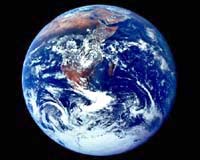
 |
The plan, one of the main achievements of a four-day Bonn conference to spur wind, solar and other clean resources, comprises 165 pledges made by governments, banks and corporations.
The promises are voluntary but will be vetted at follow-up meetings to encourage compliance, ministers said. But when, where and how this will happen have yet to be spelt out.
According to an analysis carried out by German environment ministry experts, by 2015 the proposed measures will save the atmosphere from 1.2 billion tonnes of carbon dioxide (CO2) that would be emitted if oil, gas or coal had been burned in their place.
That calculation only takes into account measures that include a timetable and figures on energy use, nor does it include future measures that could be added to the action plan.
China, with a vast population and burgeoning economy, takes pride of place, accounting alone for a billion tonnes of saved greenhouse gas.
German Environment Minister Juergen Trittin, who chaired the conference, heaped praise on China for its goal, outlined in a proposed law on energy use to have renewables account for 10 percent of its power supplies by 2010 and 12 percent by 2020.
China's "leadership will give the renewable energy revolution an enormous boost," declared Greenpeace.
In its submission to the action plan, China said small-scale hydropower would account for 50 gigawatts of the 60 gigawatts in renewable energy sketched under the 2010 target.
Wind power will account for four gigawatts, biomass generation (wood, plants and other organic fuels) six gigawatts, and solar energy 450 megawatts.
It put the cost at about 49 billion dollars.
Other submissions range from big-scale finance projects to help industrialised economies ease their dependence on fossil fuels to smaller-scale schemes to bring solar panels, small hydro generators and technical and financial training to poor communities in developing countries.
They include:
-- a 20-percent annual increase in World Bank lending for renewable energy projects over the next five years. It means the Bank's current lending of roughly 200 million dollars per year will double by 2010.
-- an increase of up to 50 percent in renewables lending by the European Investment Bank (EIB), the EU's investment arm. Credits will reach as much as 700 million euros (840 million dollars) a year by 2010.
-- low-interest loans from Germany worth 500 million euros (600 million dollars) over five years to encourage renewable energy and energy efficiency in developing countries. Germany had already pledged a billion eurosbillion dollars) until 2010 at the World Summit for Sustainable Development in Johannesburg in 2002.
-- a 22.5-million-euro (22.7-million-doollar) scheme to recover methane biogas from rotting landfill waste in the South African city of Durban and used to generate electricity.
-- installing a wind park on Egypt's Red Sea coast and other sites and promote solar energy and hydro to help the country meet a 14-percent target for renewables in its electricity supplies by 2014.
-- US funding for research into making solar and geothermal energy more cost-efficient. For example, the goal with solar power is to bring down the cost of grid-connected electricity from 20-30 US cents per kilowatt-hour today to just six cents by 2020.
TERRA.WIRE |